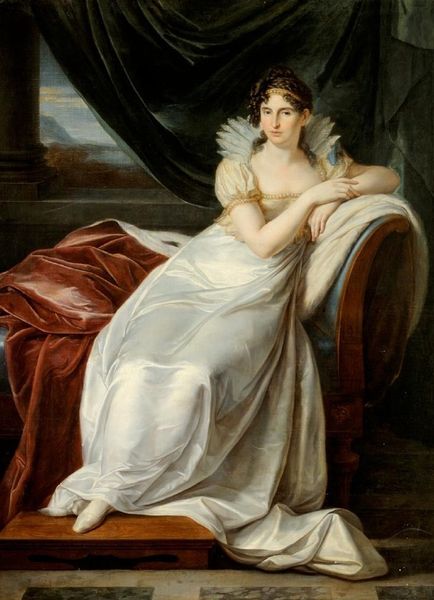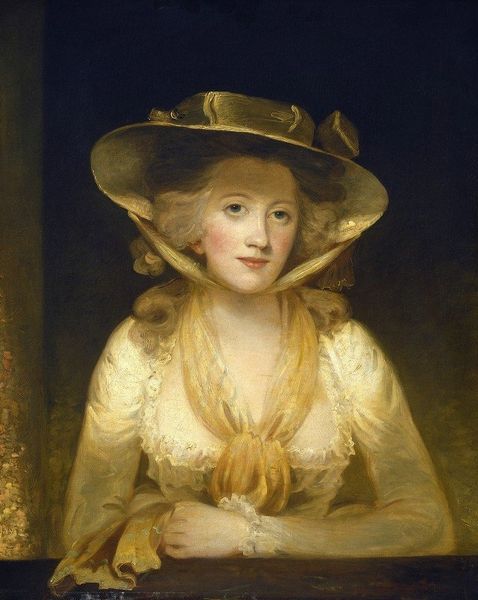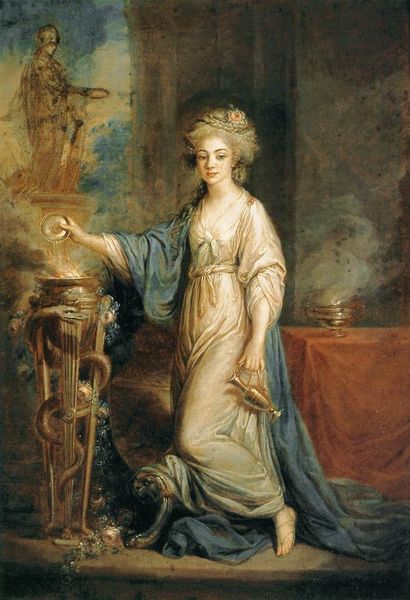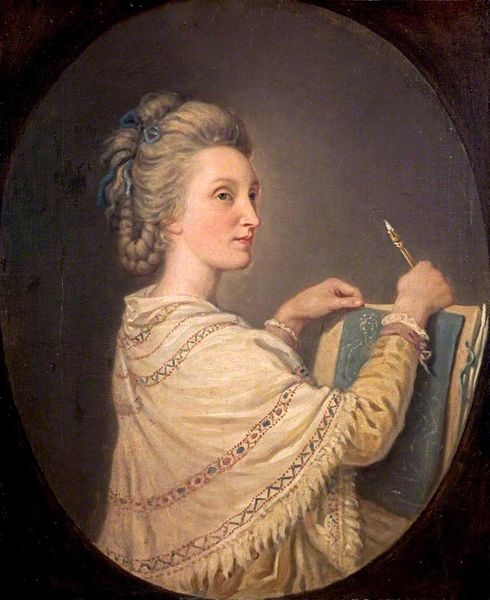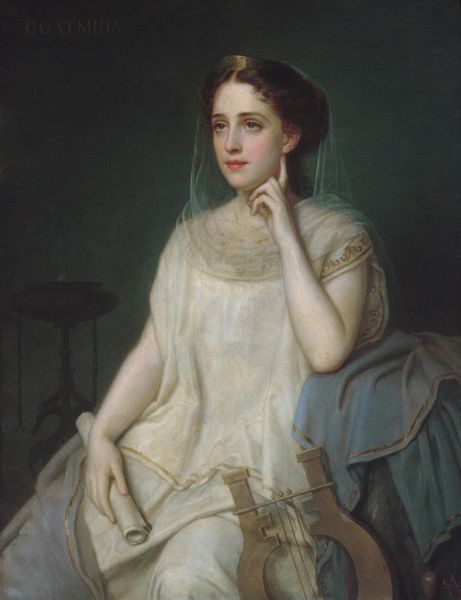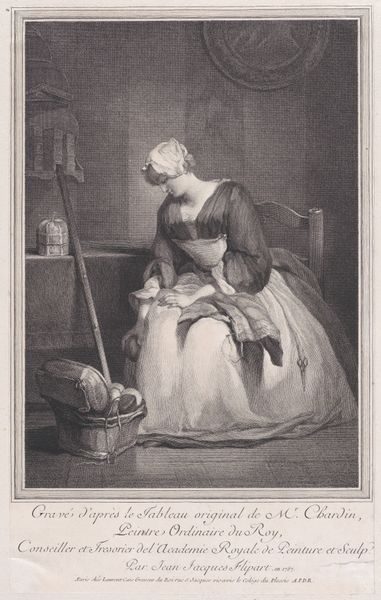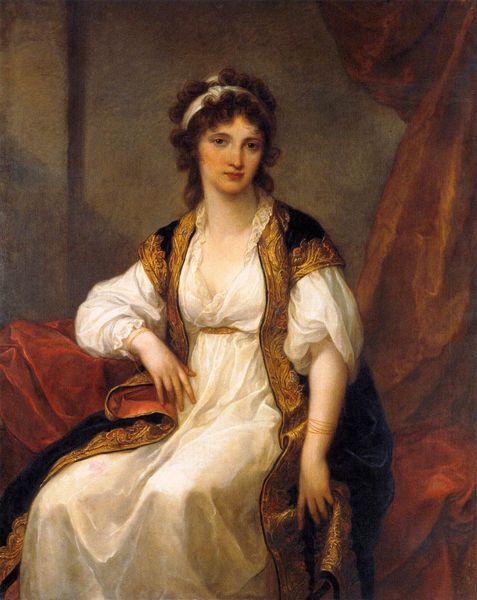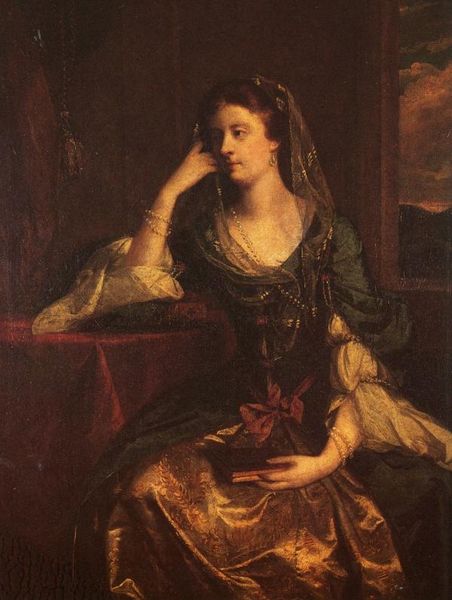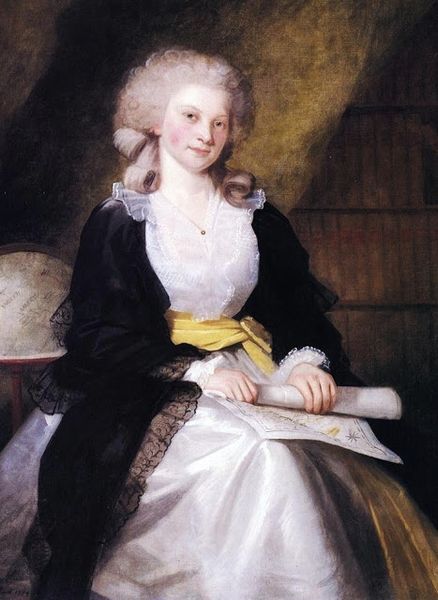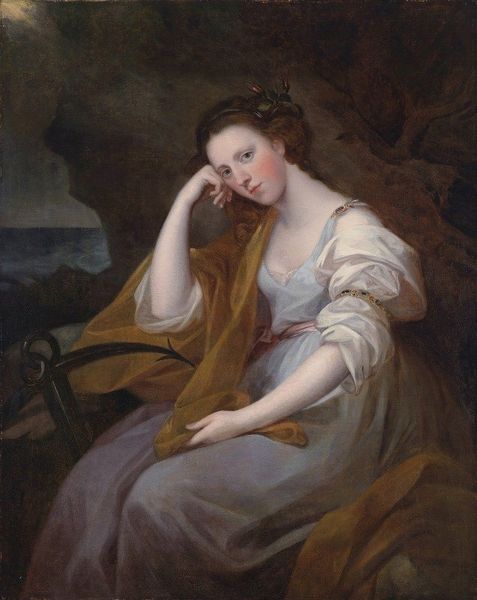
painting, oil-paint
#
portrait
#
narrative-art
#
painting
#
oil-paint
#
genre-painting
#
rococo
Dimensions: 79.3 x 61 cm
Copyright: Public domain
Curator: The artwork before us, "The Complain of the Watch," was painted in 1770 by Jean-Baptiste Greuze, an exemplar of Rococo portraiture. Its medium is oil paint. What is your first impression of the work? Editor: Well, the title definitely prepares you for a grievance of some kind, but her face doesn't show bitterness, just a kind of… resigned sadness. Like she’s airing a complaint that's already been dismissed a dozen times. And that light from the window! It really sculpts her, but doesn't offer an escape, does it? Curator: The light certainly directs our focus, and her proximity to domestic textiles highlights a debate prevalent in art history: the social position of women, craft production, and Greuze’s marketing of morality paintings for bourgeois consumption. She seems placed within the domestic sphere, no? Editor: Right, she's boxed in, even the architecture of the attic seems to press down on her. Her dress, all those soft, gathering folds—I’m thinking about who made that dress, you know? All those stitches, probably in a space not so different from the one she occupies here, where the labor is intimate, personal. It almost feels as if the artist demands a double vision for her circumstance. Curator: It’s compelling to consider the socio-economic background. Genre paintings like this catered to a market hungry for moral narratives, even if those narratives perpetuated societal norms. The watch itself becomes symbolic here, doesn't it? Is it broken, sold, pawned? The mechanics are relevant, aren't they? Editor: Absolutely. What did that watch mean in terms of labour? Who crafted its intricate workings? Maybe its loss isn’t just material, but an emotional blow because of its connection to someone… Perhaps a memento of time with a lover now gone, measured only by stolen hours. It humanizes the subject when we think of that detail as a metaphor for ephemeral romance. Curator: By imbuing material objects with emotional weight, and relating to labor practices within society at the time, we move past sentimentality. And that is Greuze’s unique craft. Editor: Exactly! Now I feel almost bad for her; I'm seeing a universe of vanished seconds… And also considering my own relationship to possessions and labor. Thank you, watch complainant!
Comments
No comments
Be the first to comment and join the conversation on the ultimate creative platform.
